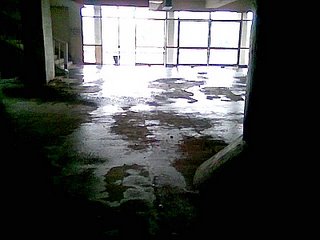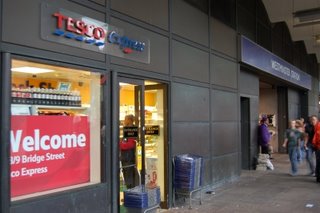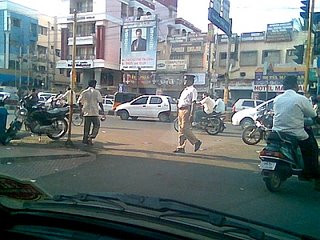Chintadripet : Far from profitable for MRTSSo many people are breathless about
Lalu Prasad Yadav speaking at the IIM about his stewardship of the
Indian Railways and the profits it has shown.
If only Mr. Yadav would visit the
Chennai MRTS line (locally referred to as the "flying train" because it is elevated along most of its alignment) to see how badly the
Southern Railway is doing. It does not help Mr. Yadav that his junior colleague from the purportedly environment-loving PMK party, Mr. Velu is from Tamil Nadu.
One look at this station entrance at Chintadripet is enough to communicate how badly things are going for the MRTS and its commuters.

The ongoing monsoon has witnessed rainwater lashing the station entrance, close to the ticketing booth. Dogs seeking shelter have become regular inside the circulating area, and they don't hesitate to leave something behind, which there is no one to clean up.
There is no lighting inside the station other than in the concourse (circulating area), so you must approach the core of the station in pitch darkness. And here is the worst part: there are huge holes in the ground, into which you might fall and break a bone! Recently, I witnessed one man with his shin all bloody after falling into a drain pit that has no cover, near the in gate.
This is such a pity because the
MRTS has built expensive stations that have tens of thousands of square feet of built up space, which can very well earn the Railways revenue. If not, they could be turned into park and ride lots, as originally planned. They could also be a combination of both. A few of the shop areas are today occupied by the cargo wings of bus operators. These are barely active at night, and only the workers loading materials are found here. Hardly the picture of a bustling commuter train station.
For a contrast, see this picture of the Westminster station opposite the British Houses of Parliament, that I took on a visit in mid-October this year.

The
MRTS is among the best examples of how Indian bureaucracy badly manages potentially profitable assets, even in an otherwise professionally-run technical service like the Railways.
Despite the high rental rates in the Central district of Chennai, these MRTS stations appear desolate and deserted. Most areas earmarked for commercial activity are empty. They are ghostly in appearance, dark, dank, dysfunctional and economically ruinous for the system. The rides are overpriced, especially in comparison with the bus. There is no integration with the city bus system, run by the Metropolitan Transport Corporation of the State Government. Even the condition set by the Central Government in India demanding that the States set up a transit management authority that will monitor integration of bus and rail has failed to evoke any response.
The irony is all the greater because India is among the countries that is contributing heavily to global warming and climate change. If it has successful rail systems, it will help the world cool down. It would also help many people in Chennai breathe easier and travel ethically.




